Forums
- Forums
- Duggy's Reference Hangar
- Luftwaffe Library
- Blohm & Voss BV 238 and FGP 227
Blohm & Voss BV 238 and FGP 227
Post a reply
- Go to Previous topic
- Go to Next topic
- Go to Welcome
- Go to Introduce Yourself
- Go to General Discussion
- Go to Screenshots, Images and Videos
- Go to Off topic
- Go to Works in Progress
- Go to Skinning Tips / Tutorials
- Go to Skin Requests
- Go to IJAAF Library
- Go to Luftwaffe Library
- Go to RAF Library
- Go to USAAF / USN Library
- Go to Misc Library
- Go to The Ops Room
- Go to Made in Germany
- Go to Campaigns and Missions
- Go to Works in Progress
- Go to Juri's Air-Raid Shelter
- Go to Campaigns and Missions
- Go to Works in Progress
- Go to Skinpacks
- Go to External Projects Discussion
- Go to Books & Resources
-
8 years agoThu Oct 22 2015, 02:02pm
 Main AdminThe Blohm & Voss BV 238 was a German flying boat (Flugboot) built during World War II. It was the heaviest aircraft ever flown when it first flew in 1944, and was the largest aircraft produced by any of the Axis powers in World War II.
Main AdminThe Blohm & Voss BV 238 was a German flying boat (Flugboot) built during World War II. It was the heaviest aircraft ever flown when it first flew in 1944, and was the largest aircraft produced by any of the Axis powers in World War II.
FGP 227
The FGP 227 was a ? scale flying model of the Blohm & Voss BV 238 flying boat, built to provide data for the development of the BV 238.
The FGP 227 was a faithful scale model with accommodation for a pilot in the front cockpit and a flight test observer in a cockpit aft of the wing. Power was supplied by six 15.7 kW (21 hp) ILO F 12/400 air-cooled two-stroke engines driving three bladed propellers.
Completed early in 1944 the FGP 227 (BQ+UZ) was fitted with a temporary wheeled undercarriage of ten small wheels fitted with low-pressure tyres. Intended to allow flight tests to commence from the manufacturers airfield, the FGP 227 refused to take-off from the grass airfield. To allow flight test to begin the aircraft was dismantled and transported to Erprobungsstelle See, Travem?nde, (E-Stelle - flying boat testing station). During transport French prisoners of war loading the wing onto flat-bed trucks allowed it to fall from a crane causing damage which was not repaired until September 1944.
Flight tests commenced in September 1944 as soon as the repairs were completed, but all six engines stopped due to fuel starvation soon after take-off, resulting in a heavy landing on the water. The FGP 227 was again repaired after which the aircraft flew several more times. However, by this time the BV 238 programme had been halted, not least because BV 238 V1 had been sunk at its moorings on Lake Schaal by allied fighters, so no useful data were gleaned from the programme.
General characteristics
Crew: 2
Length: 11.95 m (39 ft 2 in)
Wingspan: 15.25 m (50 ft 0 in)
Wing area: 24.24 m2 (260.9 sq ft)
Empty weight: 1,250 kg (2,756 lb)
Gross weight: 1,640 kg (3,616 lb)
Powerplant: 6 ? ILO F 12/400 air-cooled two-stroke piston engines, 15.7 kW (21.1 hp) each
Propellers: 3-bladed fixed pitch propellers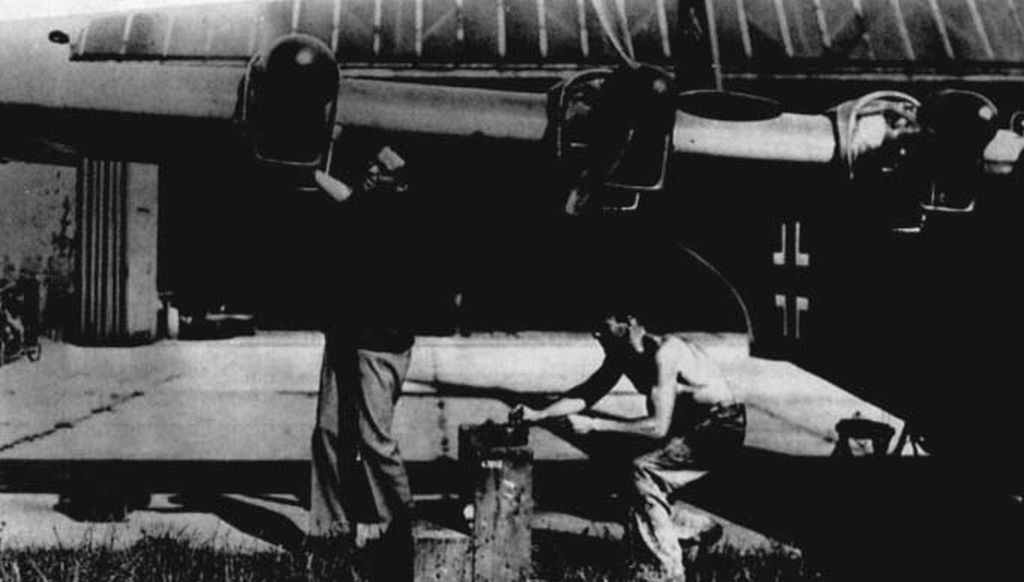
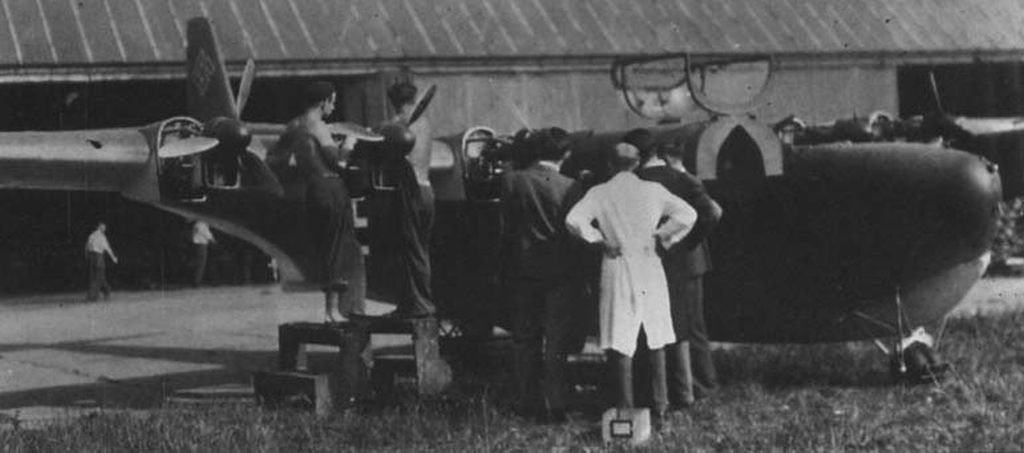
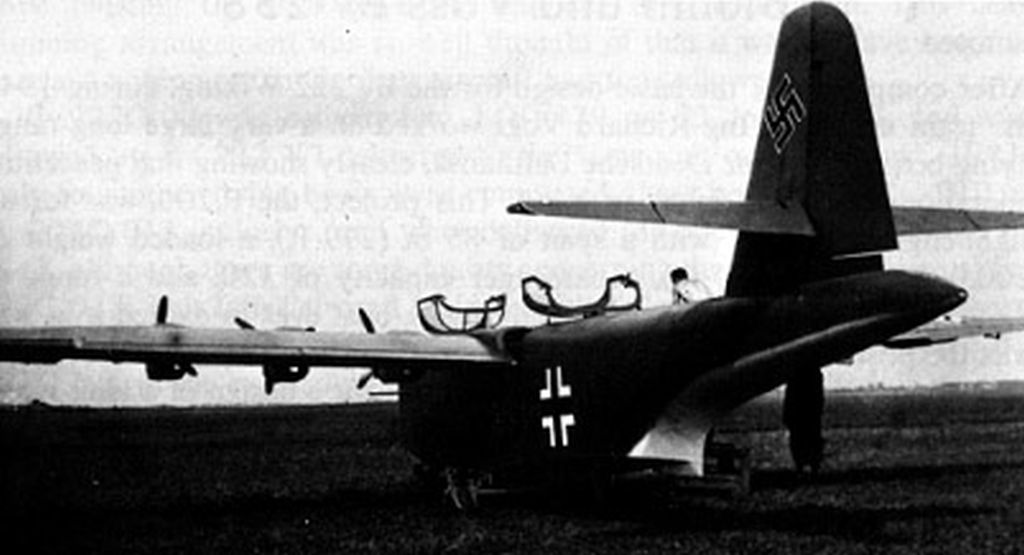
BV238
And it really was a giant. While its outlines remind a bit to the Consolidated Coronado or Martin Mars prototypes, its dimensions are comparable to the Hughes H-4 or Saunders-Roe Princess, or even to the biggest contemporary aircraft.
Early in 1941, Dr. Vogt was told by the Luftwaffe to convert his project for military service. His firm already was engaged in constructing very big-size aircraft, the BV 222. The little high-seas take-off and landing performance of this flying boat type was well known. A new construction should heal this problem, thus making the aircraft operate from the sea surface even at a wind force of 5 Bft (the BV 222 could not manage more than 2 Bft). We see the BV 238 wearing a completely different bow form than the BV 222 has, obviously dealing with the problem.
In posession of a flying boat like the BV 238 is, chances for unconventional warfare opened. Especially for cooperation with submarines this aircraft looked to be very suitable. It even is not self-understood which of them is the offensive weapon and which one only is the provider. The possible tasks for the BV 238 were the following:
1) Observation of sea areas over longer times. It was planned to send the aircraft out to the ocean not only for hours, but until to four weeks. In case of darkness or bad weather, it should water and wait for the next chance to take off.
2) Of course to fight ships, using all thinkable weapons, like cannons up to a calibre of 10 cm, conventional and glide bombs, even to employ a parasite fighter.
3) Harassment attacks on the US East Coast.
4) Functioning as an instrument to maintain control over a new hypothetical German colonial empire.
These were all demands by the German navy. The Luftwaffe denied them and saw the big flying boats only as transporters, preferring the Heinkel He 177 for high-seas reconnaissance tasks instead. Remember the BV 222 only got to this role in the first half of 1943 because at that point of time the He 177 still was not really serviceable.
But even if you see the BV 238 in a more conventional role, this aircraft still has a special feature no other transporter seaplane of this time had. The big front doors (never open on the pictures, you only see a small, separated door within the big door open) makes it also suitable for amphibian landing operations, giving the opportunity to release men and, very probably, vehicles too.
It is not known when construction work on the first BV 238 prototype V-1 really started, but it most probable during 1943. Blohm & Voss was busily producing BV 222s, delivering the last one in May 1944, so the firm should have been equipped with a considerable stockpile of aluminium. Like the other flying boats, it was built in the firm's aircraft producing site in Hamburg-Finkenwerder. The area is still active in aircraft production, now belonging to EADS and continuing the tradition of building big aircraft in form of the Airbus A380. The old aircraft halls are still standing and are still in use.
Sporting much more weight of a BV 222, the BV 238 needed high-performance engines to operate. The originally foreseen Jumo 223 diesel engines never became available, so it was necessary to spare six very valuable DB 603 engines from the needy fighter production program.
By beginning of March 1944, the huge aircraft became completed and the first flight should soon take place. For the purpose of high-seas operations, special emphasis was put on water stability and taxiing traits. Eventually these proved especially favourable as the aircraft (V-1, registrated RO+EZ) ploughed through the waters of Hamburg's harbour before taking off for the first time on 11 March 1944, under the control of Blohm & Voss chief test pilot Flight Captain Helmut Rodig.
From the beginning, the aircraft showed exceptionally good flight characterists. Reason for this was the Blohm & Voss-own servo control which made the pilot feel to fly a much smaller aircraft. In the beginning, the thread mechanism to rectract the supporting floats was not yet installed, this happened later, but this is why you can often see on pictures the BV 238 flying with the floats down. All in all there were little complaints, although teething troubles appeared like in any new aircraft. To number some of them, e.g. the installed version of the DB 603 engine had no servo mechanism to lower the power. Retracting gas was difficult and the rod system became damaged. The backside doors (never to be noticed on photographs) were a false construction, thus hampering the cooperation with boats. The airscrews needed to be fitted for reverse setting to get the aircraft slow down on water on the shortest possible distance.
Once when Oberst Siegfried Knemeyer visited (at that time head of the Technical Office of the Luftwaffe and responsible for judging new aircraft) he got in a way enthusiastic about the flying ship that he instantly wished a second flight after having had the first one under his control. Until 23 June 1944, the BV 238 successfully went through 38 test flights from the river Elbe near Hamburg. But the time for strategic actions for the Luftwaffe was over, and the RLM ordered all flight tests of the BV 238 to be stopped.
In August 1944, Blohm & Voss withdrew the aircraft to the Schaalsee, a lake about 80 km northeast of Hamburg. Works on the aircraft continued, and it was permanently kept in airworthy condition. When you carefully look at pictures of the BV 238, you can see some special gadgets. One is the huge mast on the fuselage. It was only installed for testing reasons, carrying instruments for flow measurement. Another, when you look at the ventral fin, protruding from it closely over the fuselage there is a round tube. This is - a suction intake duct for a refrigerator! Intended for to keep cool a stock of foods for the crew when operating in tropical regions...
Not visible on the following pictures is that every engine had its own maintenance crane behind it. By this, the crew was able to independently change complete engines, a very important help for situations when the aircraft should operate on its own for longer times.
The demanded change of the airscrews took place, thus making the aircraft able to turn on the spot like a tank. Only flight tests were forbidden, taxiing tests were not mentioned. So, the aircraft went to its final parking position without any help from tug boats - moving itself in the backward direction. Japanese General Otani, responsible in the embassy for contacts on a technical level, inspected the aircraft and applied for a license to produce it in the Land of the Rising Sun.
MYTH
There is a die-hard myth in literature as well as in the internet. E.g. you still can find it in the English language Wikipedia article about the BV 238. Lt. Urban Drew and his pack of Mustang pilots from 361 FG claimed on 18 September 1944 having found the BV 238 on the Schaalsee, subsequently attacking and destroying it. But due to lots of witnesses and the notes of Dr. Vogt, in winter 1944/45 the aircraft was still well alive. What Drew really did destroy, if anything, remains a mystery. Voices telling he really hit a Potez-CAMS 161 instead, located in a bay of the island of R?gen lots of miles to the east, are as well unbelievable, as the only known sample (really?) of this type was destroyed months before on Lake Constance in Southern Germany.
Near the end of WWII, there were rumours arising about Nazi celebrities trying to escape from Germany using long-range airplanes. Regarding the BV 238, it was only Dr. Vogt, who was told by "his pilot" (Rodig?, RT) to take "three families", third one to be the onboard mechanic and his, to flee to South America should the Soviets be up to conquer Hamburg. Well, the Russians did not come, but the RAF did. The BV 238 had been still in flyable condition and completely fueled up, when days before the end of WWII a Nazi party man appeared and demanded the gasoline to be pumped off to trucks, and went off. Between 23 and 26 April 1945, British Hawker Typhoons spotted the aircraft, returning the other day and destroying it by machine gun fire. The real amount of damage done is unsure, it is told the engine oil caught fire, the fuselage broke in two and the aicraft sank, with the wing still being over the level of the shallow lake.
The wreck kept on being there until 1947/48, thus giving local children an adventurous - and dangerous - playing ground. Then it was blown up and scrapped, the valuable aluminium and other materials to be fed into the needy German post-WWII economics. Decades later divers led by seaplane expert Prof. Dr. Elmar Wilczek found some leftovers, now possibly being kept in a museum (information from the German Google earth forum). Dr. Vogt really went to America - but within "Operation Paperclip" to the USA, where he spent the rest of his professional life.
Above copied from the web.
General characteristics
Crew: ca 12
Length: 43.35 m (142 ft 3 in)
Wingspan: 60.17 m (197 ft 5 in)
Height: 12.8 m (42 ft 0 in)
Wing area: 360.16 m2 (3,876.7 sq ft)
Empty weight: 54,780 kg (120,769 lb)
Gross weight: 90,000 kg (198,416 lb) for reconnaissance missions
95,000 kg (209,439 lb) for bomber missions
Max takeoff weight: 100,000 kg (220,462 lb)
Powerplant: 6 ? Daimler-Benz DB 603G inverted V-12 liquid-cooled piston engines, 1,417 kW (1,900 hp) each for take-off
1,163 kW (1,560 hp) at 7,375 m (24,196 ft)
Propellers: 3-bladed constant-speed propellers
Performance
Maximum speed: 350 km/h (217 mph; 189 kn) at 60,000 kg (132,277 lb) weight at sea level
425 km/h (264 mph) at 60,000 kg (132,277 lb) at 6,000 m (19,685 ft)
Landing speed: 143 km/h (77 kn, 89 mph)[citation needed]
Range: 6,620 km (4,113 mi; 3,575 nmi) at 365 km/h (227 mph) at 92,000 kg (202,825 lb) at 2,000 m (6,562 ft)
Service ceiling: 7,300 m (23,950 ft)
Wing loading: 261 kg/m2 (53 lb/sq ft)
Armament
Guns: 8 x 13 mm (0.512 in) MG 131 machine guns with 1,800 rpg; 4 in each nose and tail turret
8 x 13 mm (0.512 in) MG 131 machine guns with 900 rpg; 4 in each wing mounted turret
4 x 13 mm (0.512 in) MG 131 machine guns with 500 rpg; 2 (as a twinned MG 131Z) in each manually aimed beam/waist position
2 x 20 mm (0.787 in) MG 151/20 autocannon with 1,400 rpg in forward dorsal turret
Bombs: 20 x 250 kg (551 lb) SC 250 bombs in wing bomb bays
and 4 x 1,000 kg (2,205 lb) SC 1000 bombs on external racks
or 2 x 1,200 kg (2,646 lb) LD 1200 torpedoes on external racks
or 4 x Henschel Hs 293 missiles on external racks, if Bv 238 fitted with FuG 203 Kehl MCLOS guidance transmitter
or 2 x 1,000 kg (2,205 lb) BV 143 glide bombs on external racks
Below cockpit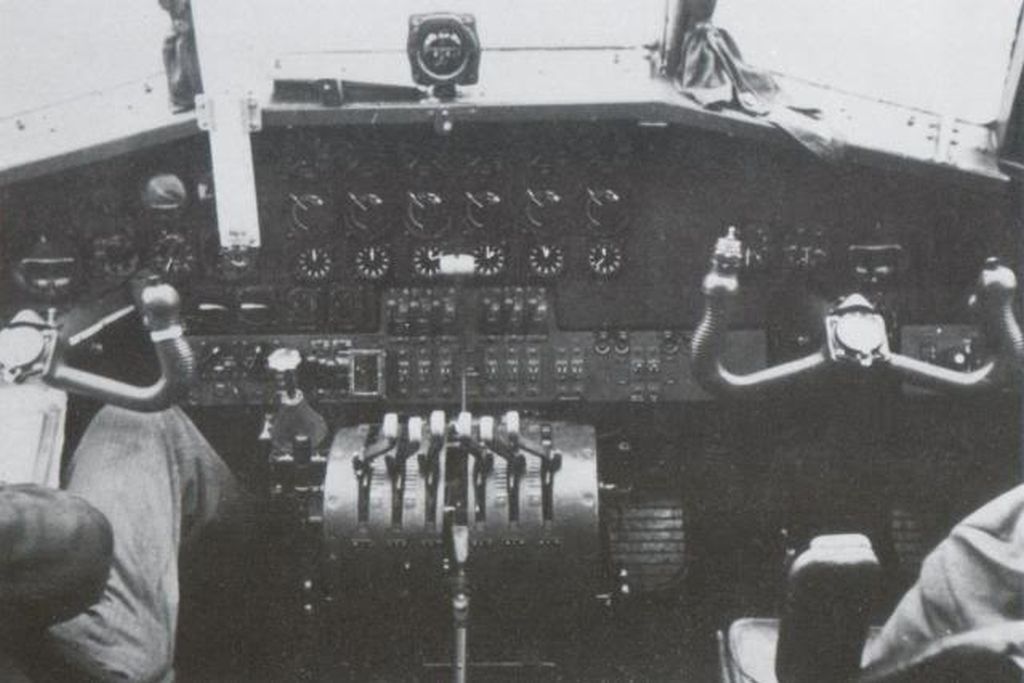
Below BV238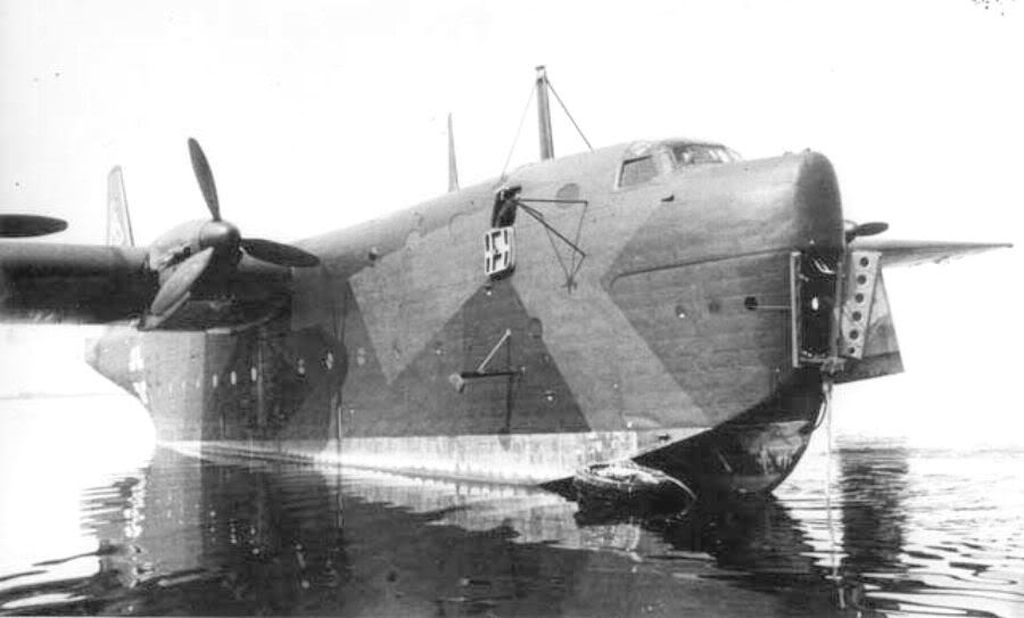

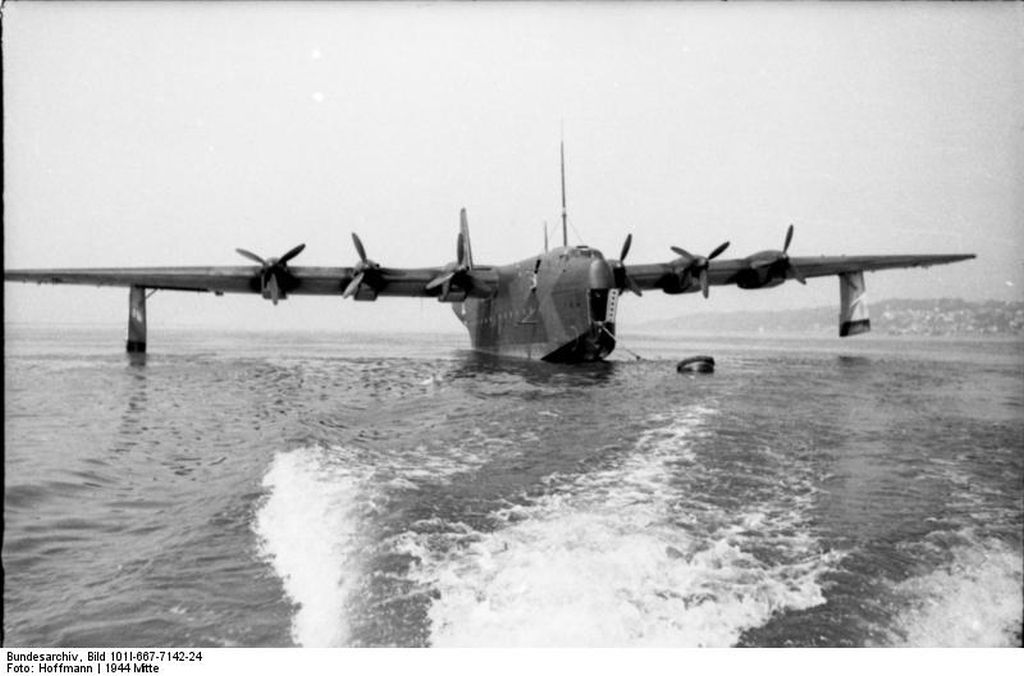
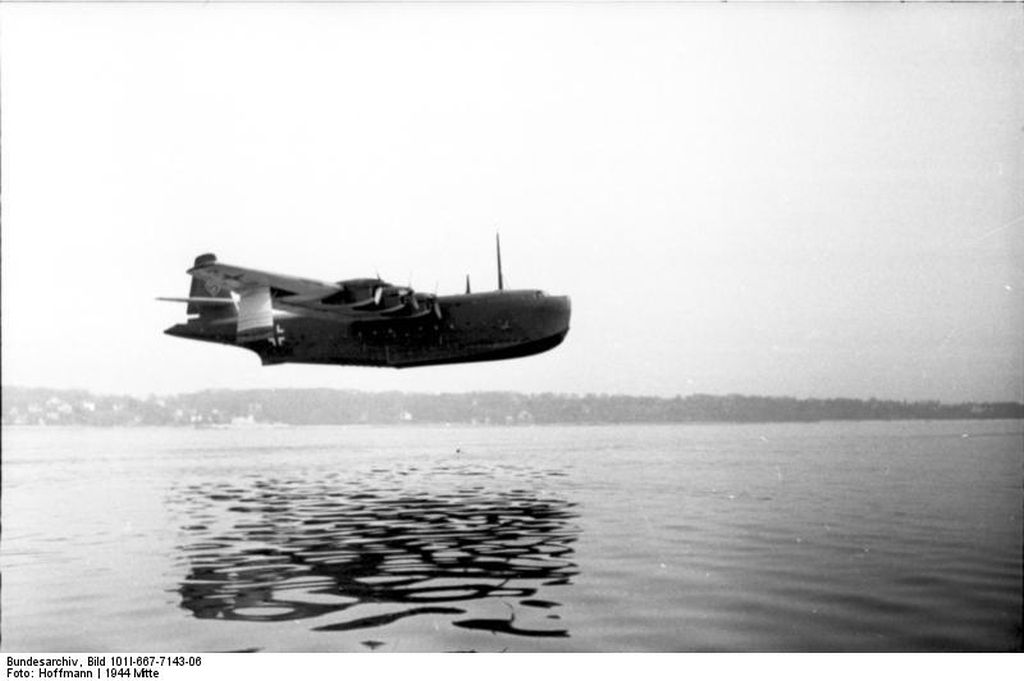
Below sad end after a visit from RAF fighters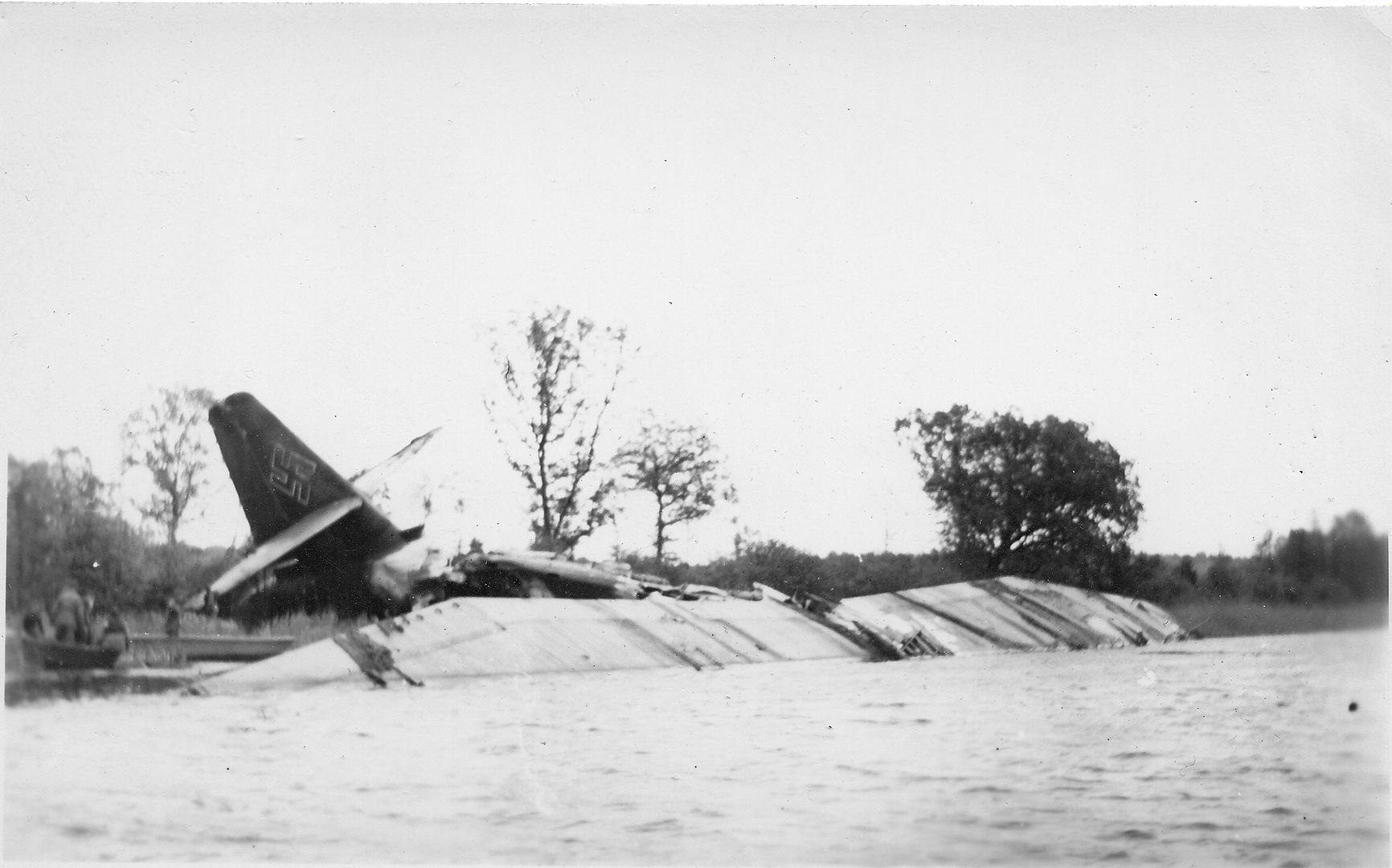
Post a reply
- Go to Previous topic
- Go to Next topic
- Go to Welcome
- Go to Introduce Yourself
- Go to General Discussion
- Go to Screenshots, Images and Videos
- Go to Off topic
- Go to Works in Progress
- Go to Skinning Tips / Tutorials
- Go to Skin Requests
- Go to IJAAF Library
- Go to Luftwaffe Library
- Go to RAF Library
- Go to USAAF / USN Library
- Go to Misc Library
- Go to The Ops Room
- Go to Made in Germany
- Go to Campaigns and Missions
- Go to Works in Progress
- Go to Juri's Air-Raid Shelter
- Go to Campaigns and Missions
- Go to Works in Progress
- Go to Skinpacks
- Go to External Projects Discussion
- Go to Books & Resources
